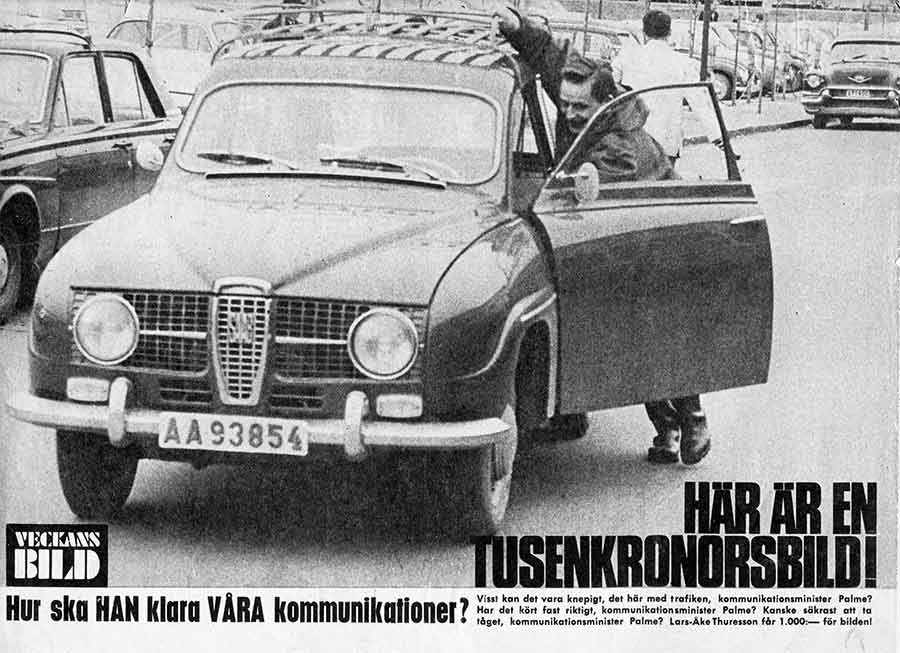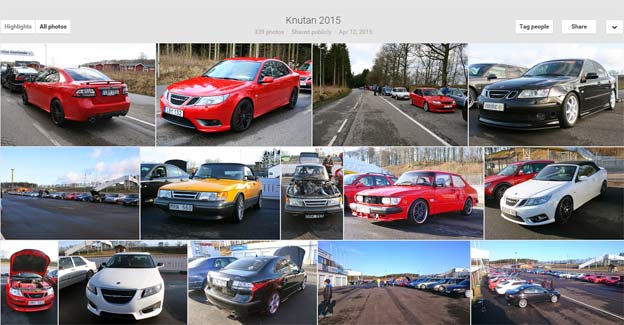Olof Palme, a notable figure in Swedish political history, served as the Prime Minister of Sweden from 1969 to 1976 and again from 1982 until his tragic assassination in 1986. Known for his progressive policies and outspoken views, Palme’s life and career have been subjects of extensive discussion and analysis.
However, another interesting aspect of his life, less discussed but equally fascinating, is his affinity for Saab cars, particularly the iconic Saab 900. This article delves into Palme’s connection with Saab, his specific model, and the broader historical and cultural context of Saab vehicles.
Table of Contents
Olof Palme’s Car Collection: From Volvo to Saab
Olof Palme’s journey with cars began with a Volvo, but his love for Saab quickly took precedence. Residing in the district of Midsommarkransen, just south of Stockholm, Palme made his first significant purchase in the automotive world with a blue Saab 95.
This car was a two-stroke engine model, which was a hallmark of Saab’s engineering during that era. Palme’s collection continued to grow with several other Saab 95 models, each red in color, reflecting a consistent preference for this versatile and reliable vehicle.

Palme’s preference for Saab vehicles was not just about functionality but also comfort. One interesting detail that emerged was Palme’s unique habit of sitting on one leg while driving. This habit influenced his choice of cars, leading him to prefer Saab for their comfortable seating arrangement.
The 1984 Saab 900 GLi: Palme’s Final Ride
In 1984, Olof Palme acquired what would be his final car: a Saab 900 GLi from 1984. This model, characterized by its distinctive yellow hue, was not particularly favored by Palme or his wife, Lisbet. Despite their personal preferences, the car remained in the family’s possession until 1996, long after Palme’s untimely death. The Saab 900 GLi represented more than just a mode of transportation; it was a symbol of Palme’s era and a testament to his connection with Swedish automotive craftsmanship.
The Restoration and Exhibition of Palme’s Saab
Palme’s Saab 900 GLi underwent significant restoration and was eventually displayed at the Bilsport Performance & Custom Motor Show in Jönköping. Kenneth Svensson, who was involved in the restoration, mentioned that the project was pursued primarily because it was Palme’s car. The car was extensively renovated after being acquired from Olle Sandström, a car collector who had passed away in 2007. The vehicle was initially received as a shell with only two rear wheels and the rear axle intact, accompanied by 20 moving boxes filled with parts.
The comprehensive restoration included assembling and polishing the car, and it was later valued and insured for 200,000 kronor. Svensson admitted that the restoration would not have been undertaken if it were not Palme’s car, highlighting its unique historical significance. After the motor show in Jönköping, the Saab 900 GLi was moved to Albinsson & Sjöberg’s car museum in Karlskrona, where it continues to be exhibited.
The Cultural Significance of Saab in Sweden
Saab automobiles have long been a significant part of Swedish culture and identity. Known for their innovative engineering, safety features, and unique design, Saab cars have garnered a loyal following both in Sweden and internationally. The Saab 900, in particular, became a symbol of Swedish ingenuity and reliability. Its aerodynamic design, turbocharged engines, and robust construction made it a favorite among car enthusiasts and everyday drivers alike.
Olof Palme: A Brief Biography
Olof Palme was born in 1927 and tragically assassinated on February 28, 1986, a crime that remains unsolved to this day. A graduate in law and a reserve officer, Palme began his career as a journalist at Svenska Dagbladet in 1948. He married Lisbet in 1956, and the couple had three sons: Joakim, Mårten, and Mattias. During his tenure as Prime Minister, Palme was known for his progressive policies, outspoken criticism of apartheid in South Africa, and opposition to the Vietnam War, which often placed him at odds with international powers.
The Impact of Olof Palme’s Assassination
Olof Palme’s assassination sent shockwaves through Sweden and the international community. The sudden loss of a prominent leader who had been a vocal advocate for peace and social justice left a void that was difficult to fill. The investigation into his murder has spanned decades, with numerous theories and suspects but no definitive answers. This tragic event underscored the risks faced by public figures who challenge the status quo and advocate for change.
The Early Years: Palme’s Little Red Car
Before his deep involvement with Saab, Palme was seen driving a Neckar Jagst, a small red car that stood out on the streets of Stockholm in 1969. This car, with its whimsical name, was driven by Palme, then Europe’s youngest head of government, accompanied by his friend Harry Schein. This anecdote highlights Palme’s early years in office and his evolving taste in automobiles, eventually leading him to Saab.
Remembering Olof Palme through His Saab
The story of Olof Palme’s Saab 900 GLi is a unique lens through which we can view the life of a remarkable statesman. While cars are often seen merely as vehicles, they can also be powerful symbols of personal history and cultural identity. Palme’s Saab 900 GLi is not just a car; it is a piece of Swedish history, a testament to Palme’s legacy, and a symbol of the enduring appeal of Saab automobiles. As we remember Olof Palme, we also celebrate the rich heritage of Saab, a brand that continues to inspire and captivate automotive enthusiasts around the world.












Och ändå var det 240 och 740 som brukade kallas Sossecontainrar 🙂 Fina de var, Olof och Lisbeth. Han kunde ha kostat på sig en EMS ändå. Extra mycket Saab
En del i fasaden “Palme” och grundlurade sossar. Arbetargrabben…
Palme var ingen ”arbetargrabb”, och mig veterligen utgav han sig inte heller för att vara det.
Heh. Mauno Koivisto, Finnish Prime Minister, CEO of the Finnish Central Bank,a (at the same time, because Finland is a corrupt socialist shit country, the Swedish social democrats would be considered far-right nazis by every Finnish political party, we have no political right) was driven in and later bought for himself and drove a Saab 900 Turbo “Finlandia”. A 5 door LWB 900 only sold in Finland because Trollhättan was of the opinion that a 5 Door hatchback isn’t suitable for an executive saloon.